#the noldor
Text
"our most beloved star" is such a fun way to say "that rock my relatives killed a lot of people over that's in the sky now"
#tolkien#jrr tolkien#lord of the rings#lotr#light of the silmarils#silm fandom#silmarils#the silmarillion#Silmarillion#light of Earendil#earendil#elwing#galadriel#Lothlorien#noldor#the noldor#noldorian#noldorian nonsense
831 notes
·
View notes
Text
The Silmarillion is all about separation and LOTR is all about coming and staying together and I think that's beautiful.
The victory of the War of Wrath is a hollow victory. It is a proper beginning of the time of elves in Middle-earth, but there's been so much death and destruction and separation that it feels like the end of everything. Because most of the people involved are going to be separated from each other. Galadriel and Celebrimbor and Elrond and Gil-galad are separated from their families. Earendil is separated from Elwing. Finwe is separated from Indis, and possibly also from Míriel. Aegnor is separated from Andreth. No one ends up together and it's unbearably sad.
But in LOTR, everyone remains together. Frodo and Bilbo sail to Valinor, but so do almost all the others — Gandalf goes back, and Sam, and Legolas, and even Gimli! Only Merry and Pippin are left, and they get to spend A LOT of time with Sam and Aragorn — they're ultimately even buried at Aragorn's side! Not to mention the other elves. Elrond doesn't get to see Arwen again, but he DOES get to see Celebrian again. Galadriel gets to see her childhood home and family, and even her husband will come to her home soon. All the separation is bridged, ended! The time of the elves has ended, but it feels far happier than the beginning had been! 'Fair shall the end be' takes on a whole new meaning, as does 'day shall come again', because both those things DO end up happening, far into the future, even if they aren't precisely predictions at the time at which they have been spoken.
Anyway this makes me tear up a little bit because the beginning hurts and the end is so healing 🥹🥹
#consider this my celebratory lotr20 post#the silmarillion#silm#lotr#legendarium tag#meta#the fellowship#the noldor
76 notes
·
View notes
Text
At all times I'm thinking about the poetic grandiose, the wretched grace, the brutal beauty, the hard-won victory, and the sad magnificence with which Maedhros falls.
It's about the way Maedhros finally gives in and yields to what he's been fighting against since the first kinslaying, the way he still has his unyielding determination & great battle strategies but when once they were considered good qualities of him now they drive him and the Middle-earth he once fought so hard to protect to their demise, the way Celegorm was the driving force behind the second kinslaying but still as the overlord of the Fëanorians Maedhros was the one who had the final say and decided to go with it & the third kinslaying happened with the reluctant agreement of all of the four sons despite their best effort (and they who held the borders and protected the people of Middle-earth once now ravaged a refuge) but at the end, Maedhros-who once was a beacon of hope before Nirnaeth & would not slay his kin hoping that he would free the Simarils from Melkor's grasp- was the driving force behind the fourth Kinslaying out of desperation. It's about the way he who once led the free folk against Melkor wouldn't even fight in the War of Wrath anymore. It's about how he who once held the banner against Melkor and whom Melkor was weary of at the end helped Melkor in some ways. It's about how all throughout his spiral you can see his inner turmoil & noble nature still shining through as he searches for Elured & Elurin, tries to forswear the oath, tries to negotiate in peace, and at least agrees to take Elrond & Elros in and protect them, and eventually when the Silmarils burn his hands he can't live with himself anymore. The way he loses the one battle and war that he truly wanted to win and after that in a new war that he doesn't want, wins every battle that he doesn't want with every realm but cannot win the one thing he truly wants (and the thing he supposedly "wants" is the thing that ruined his family and his life. So the Sons of Feanor in the whole Arda must have been the only ones who truly didn't "want" the Silmarils) so he still loses the war. It's about the way Maedhros' final downfall comes with him "winning" his last fight. With him "winning" the thing he spent all of the story seeking and fighting for. It's about the way that thing truly wasn't a thing Maedhros himself ever sought or desired. It's about the way in which his story truly comes to an end. Just not the end anyone hoped for but the end that anyone could see coming. The way it was both preventable and inevitable. It's about the way in the end he essentially fills the role of Fëanor against whom he was a voice of reason (if still a loyal follower) at the beginning and despite how he tried to do things differently than his father, he eventually became Fëanor. He did, in the end, burn people's ships. He did burn his way back. He did ignore Eonwe and took up arms against the Valar and convinced Maglor to do so, too. The way Fëanor always haunts the narrative from the beginning but before Nirnaeth it's in a mute far away subtle way but after Nirnaeth it becomes completely obvious to the point that it's like Maedhros' story essentially ended with Nirnaeth & it's now Fëanor's story that continues through him. Maedhros after Nirnaeth is like a dead man haunting his own life trying to finish an unfinished business so he can finally die in peace. But at the same time, at that point, it all seems like a natural, fitting end to him. He was always meant to be a tragedy.
#the silmarillion#tolkien#jrrt#jrr tolkien#jirt#lotr#the lord of the rings#the silm#maedhros#maitimo#nelyafinwe#the feanorians#the noldor#the sons of feanor#russandol#feanor#feanoro#curufinwe#my two cents#tolkien meta#silm meta
171 notes
·
View notes
Text
I Read The Silmarillion So You Don't Have To, Part Five
Previous part: https://nyxshadowhawk.tumblr.com/post/728961431368761344/i-read-the-silmarillion-so-you-dont-have-to-part
Chapter 10: Of the Sindar
Meanwhile, in Middle-earth…
Remember the Sindar? They’re the people of Elwë, the only one of the original three Elven Lords who never made it back to Valinor, and Melian, a Maia who seduced him. The Sindar are basically native to Middle-earth, and save for Elwë himself, none of them have seen the Two Trees of Valinor. That makes them “Grey Elves,” neither light nor dark. They live in Beleriand, the westernmost land mass of Middle-earth, on which most of The Silmarillion takes place, and which is completely gone by the time LotR takes place.

Elu Thingol by @bohemianweasel
The Sindar know Elwë as Thingol, which is Sindarin for “Greymantle,” and acknowledge him as king. Earlier, I assumed that Thingol and Melian were the ancestors of the Sindar, but this isn’t true; they only have one child, and her name is Lúthien. She is one of the other major players in The Silmarillion, and was based directly on Tolkien’s wife Edith, so she’s kind of a big deal. She’s born in the forest of Neldoreth, and white flowers spring up to greet her.
While Melkor was being held captive in Valinor, the Dwarves finally enter the picture in Middle-earth. They call themselves Khazâd, and the Sindar call them Naugrim, which means “stunted people.” The Elves are somewhat bewildered when the Dwarves come into Beleriand from the East, because they didn’t know that any other people existed. They assumed that they were the only living things who could speak or make things. They don’t learn the Dwarven language, but the Dwarves endeavor to learn Sindarin. When the Noldor eventually show up, the Dwarves really like them, because the Noldor share their reverence for the god Aulë and their skill at metalwork and cutting gemstones.
Because Melian is a Maia, she can see the future. She warns Thingol that the peace isn’t going to last. Thingol decides to build a fortress in case worst comes to worst, and enlists the help of the dwarves to build it. The Dwarves oblige, happy to have a new project, and Thingol pays them in pearls, which they’d never seen before. The biggest pearl is called Nimphelos, which the Dwarves particularly value. (Its name sounds a lot like Omphalos, an egg-shaped sacred stone at Delphi that the Ancient Greeks thought was the navel of the world.) The Dwarves build Thingol a mansion underground, in the style of their own. I’m guessing that, like Hobbit holes, this is a reference to Celtic fairy lore that describes fairies as living in mounds. Like the fairies of British and Irish lore, Thingol has a lavish underground palace called Menegroth, the Thousand Caves. Its pillars are carved to look like trees, with carved animals on the walls and in the “branches” of the pillars. Colorful mosaics decorate the floors, banners and tapestries chronicle the deeds of the Valar, there are silver fountains and singing nightingales, and it’s all as beautiful as anything gets outside of Valinor.
Everything’s great for a bit, but Melkor’s monsters still exist, and eventually Orcs and wolves push into Beleriand. The Elves don’t know what the Orcs are. They assume that the Orcs are Avari (Elves that refused to go to Valinor) that turned evil, which is almost right in an indirect way. Thingol needs weapons to fight Melkor’s monsters, but the Sindar don’t have any weapons and don’t know how to make them, because they’ve never needed them before. The Dwarves know how to make them, having used them to fight all the dangerous things in the East, and they teach the Sindar how to make and use them. Dwarves remain the absolute best at making things of steel, and they invented chainmail.
Remember the Nandor? They were another subgroup of Elves who split off from the Teleri while they were traveling to Valinor, and stayed in Middle-earth. They become the Wood Elves, and their descendants will be the elves of Mirkwood. But at this point in history, they come to Thingol, seeking protection from Melkor’s monsters. Thingol lets them stay in an eastern land called Ossiriand.
A Sindar Elf named Daeron invents the runic writing system, which the Elves don’t care for, but the Dwarves readily adopt.
Once again, everything’s great for a while. But then, Morgoth and Ungoliant have their struggle to the north. The Sindar hear Morgoth’s shrieking and know that something is wrong. Melian’s magic keeps Ungoliant from entering their land, but barely. The Sindar are suddenly assaulted by Morgoth’s massive army of Orcs from his northern citadel of Angband. The Orcs aren’t like anything the Sindar have ever seen, and there’s thousands of them. We get a short summary of the ensuing battle (in which Tolkien drops more place names than I can possibly keep track of).
The Elves and Dwarves win, but they lose a lot of lives in the process. The King of the Nandor, an Elf named Denethor, dies in combat. Distraught by his death, many of his people renounce open war. They are called Laiquendi, “Green Elves,” because they wear leaves. The rest of the Nandor join the Sindar, and merge with them. The Sindar fence themselves into their forest with a magic wall of “shadow and bewilderment” that Melian casts to keep the Orcs out. After that, their forest becomes known as Doriath, the “Land of the Girdle,” after the magic wall. The wall protects them, but the peace and bliss are broken.

Chapter 11: Of the Sun and Moon and the Hiding of Valinor
In which the Two Trees have a last hurrah.
Back in Valinor, the Valar are very sad about the Trees, but they’re even sadder about Fëanor. Fëanor is, without a doubt, the best of the Elves. He may be a narcissist, but he’s right about how great he is: he’s the strongest, the smartest, the cleverest, the most beautiful, the most skilled, and the most capable both mentally and physically. Imagine all the good he could have done in the world, and what beautiful and useful things he might have made, if Morgoth hadn’t corrupted him! Now he’s going to waste his life on a pointless endeavor, and his entire line is cursed. It didn’t have to be like this. When a messenger tells Manwë how Fëanor responded to the prophecy of doom, Manwë cries.
However, Manwë doesn’t dispute Fëanor’s boast that people will sing of his deeds until the end of the world. After all, songs are beautiful things. If you remember, Eru Ilúvatar told Melkor that all of his evil deeds will result in more beautiful things, that no one would otherwise have conceived of. Evil always begets good, in spite of itself. Fëanor’s evil deeds will result in the creation of beautiful art in the future, thus indirectly producing good things. But that doesn’t make Fëanor’s actions any better in the present.
Yavanna, goddess of plants, and Nienna, goddess of sorrow, do their absolute best to heal the Trees. The Trees are beyond saving, but the goddesses’ lamentation does do something: With their last bit of strength, Telperion bears a single silver flower, and Laurelin bears a single golden fruit. Yavanna picks them both off the trees. After that, the Two Trees die for good, with nothing but their lifeless stems remaining in Valinor as a sad monument to what once was. Manwë blesses the flower and the fruit, and Aulë makes vessels to hold and preserve them. Then Varda hangs them in the sky as the new lamps: The flower of Telperion is the Moon, and the fruit of Laurelin is the Sun. The two lights will help the Children of Ilúvatar and hinder Morgoth.
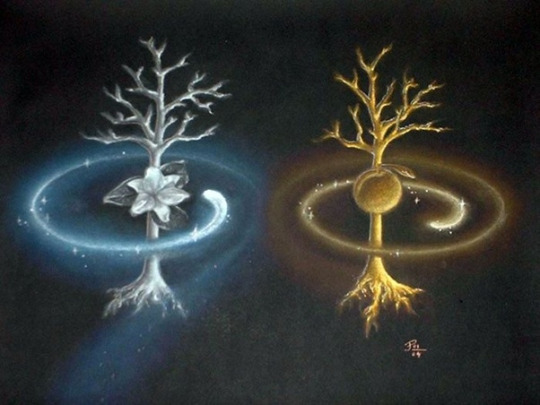
Creation of the Two Trees by Julia Pelzer
Each group of Elves has a different name for the Moon and the Sun. The Vanyar (the Elves who got to Valinor first and stayed there) call them Isil and Anar. The Noldor call them Rána the Wayward, and Vána the Heart of Fire.
The Moon and Sun also have their own Maiar to guide them through the sky. The Maia of the Sun is called Arien, and the Maia of the Moon is called Tilion. Both Maiar had loved their respective Trees while the Trees were alive, and begged for the position of tending to the Sun and Moon. Arien is a fire goddess who doesn’t fear the heat of the sun, and Tilion is a hunter god who was one of Oromë’s companions. (This mirrors Norse Mythology, in which the Sun is driven by a goddess called Sol or Sunna, and the Moon by a god called Máni.)

Narsilion by breath-art
The Moon rises first, and brings hope to the Elves. When the Moon rises, Fingolfin and the Noldor begin their long trek into Middle-earth across the frozen north. After the Moon rises and sets seven times, the Sun is hung in the sky, and the first dawn comes. When the Sun sets, it comes to rest in Valinor, briefly reminding the Valar and remaining Elves of the light of the Two Trees and the joy they once had. But the Sun and Moon still pale in comparison to the Two Trees. The only remaining things that preserve the original light, pre-Ungoliant’s destruction, are the Silmarils.
Morgoth is obviously horrified, and immediately sends dark clouds to prevent the Sun from shining upon his land of Angband. Arien, the Maia of the Sun, is the only entity that Morgoth is really afraid of, and he no longer has the strength to attack her. But he does send evil spirits after Tilion, the Maia of the Moon. (This might explain why the moon has phases, but it’s not explicitly said.)
The Valar still remember what happened the last time they put up lamps, and they’re not about to let Morgoth destroy their paradise for a third time. They decide to almost completely cut off Valinor from the rest of the world. They make the Pélori Mountains around Valinor rise impossibly high, with sheer faces like glass. The only way in or out of Valinor is through a mountain pass called the Calacirya, which the Valar leave open to allow the Elves to see the stars. But the pass is heavily guarded. And, as an extra precaution, they fill the sea with enchanted islands that are full of illusions to confuse and trap anyone who tries to sail to Aman. The Noldor are officially, permanently cut off from Valinor — there’s no turning back now.

Telperion and Laurelin by MrSvein872
Chapter 12: Of Men
In which the Men finally show up.
Having sealed themselves away, the Valar basically leave Middle-earth to the mercy of Morgoth. It’s not all bad, though; the Sun keeps Morgoth at bay, and it causes many new things to grow in Beleriand. Beleriand is a pretty nice place, for what it’s worth. Not as nice as Valinor, but, y’know… it could be worse.
When the Sun rises, the Men finally awaken. The Elves have a lot of different names for them, but the important ones are Atani (“Second People”) and Hildor (“Followers”). The Men didn’t have a Vala to invite them to Valinor. Men fear the Valar, because they don’t really know what the Valar are or why they’re there, and the Valar have stopped paying attention to Middle-earth. Ulmo watches over the Men through all the water of Middle-earth, but Men don’t know how to understand the divine messages brought to them by the water. It’s rumored that the Men befriend the Avari, the Dark Elves who never went to Valinor.
At the time, Men looked more like Elves than they do now. Men were taller, stronger, and longer-lived than they are now, but Elves were still prettier, wiser, and more skilled than Men. Elves are immortal, and do not sicken or age, but they can still be killed. Men have less robust bodies and are more prone to illness and injury. Dark Elves are better than Men, but the High Elves that saw Valinor are significantly better than both Dark Elves and Men. The only Dark Elves that come close to the greatness of the High Elves are the Sindar, and that’s only because their queen is a Maia.
The other big difference between Elves and Men is what happens after they die. When Elves die, they go to the Halls of Mandos and eventually reincarnate. The Elves don’t know what happens to Men after they die. If they go to the Halls of Mandos, they don’t go to the same part of them that the Elves go to. No one but Mandos and Manwë knows what happens to the Men after that. Only one Man ever came back from the dead (we’ll get there). It’s possible that the only entity that knows anything about what happens to Men after death is Ilúvatar himself.
The relationship between Elves and Men gets steadily worse with time, mostly because of Morgoth (again, we’ll get there). By the time of the Third Age, when LotR takes place, there are very few Elves left. They have retreated away from the sunlight, into lonely woods and caves, and “become as shadows and memories.” The Men take over from the Elves, and forget that the Elves ever existed. But the The Silmarillion is about the First Age, and back then, Elves and Men were friends. Some Men achieved greatness through learning Elven wisdom, and some Men even had children with Elves.
Chapter 13: Of the Return of the Noldor
In which we return to the main plot, and a LOT of shit goes down.
Where we last left the Noldor, Fingolfin was leading them on an impossible journey across a frozen wasteland to cross into Middle-earth, because he saw Fëanor burn the boats on the opposite shore. Fëanor and his sons continued further into Middle-earth, and made a camp in the north.
Morgoth also saw Fëanor burn the boats. Even Morgoth was a little afraid of Fëanor, so he decides to preemptively attack Fëanor’s camp. Despite being taken by surprise, the Elves trounce the Orcs, because they still have the strength of Valinor in them. They’re strong and swift, with sharp and effective weapons, and the Orcs don’t stand a chance. A small handful of Elves — Fëanor, his seven sons, and their loyalists — slaughter an entire army’s worth of Orcs in only ten days. Morgoth’s plans for the conquest of Beleriand are ruined, for now.
Fëanor assumes that by chasing down the Orcs, he’ll find Morgoth. Fëanor is so impassioned, so ready to finally kick Morgoth’s ass, that he pats himself on the back for having defied the Valar. It was such a good idea to tell the Valar to go fuck themselves and come to Middle-earth! Now he gets the opportunity to personally take Morgoth down!
He spoke too soon. Fëanor promptly finds himself face-to-face with the fortress of Angband and an entire army of Balrogs. Oops.
Somehow, Fëanor manages to hold his own against multiple Balrogs, until Gothmog, the Lord of the Balrogs, nearly kills him. He only survives because his sons arrive at the last minute with reinforcements to fend off the Balrogs.

Fëanor against the Lord of the Balrogs by Evolvana
Fëanor doesn’t live for much longer, though. His sons start to carry him back to their camp, but he bleeds out on the way. He curses Morgoth and tells his sons to avenge him with his dying breath. As his spirit leaves him, his body burns to ash, because his soul is just that fiery. And that’s it — Fëanor, the mightiest Elf to ever life, is dead. His curse means that his soul is forever trapped in the Halls of Mandos, and he will never reincarnate. No one like him will ever appear in Arda again.
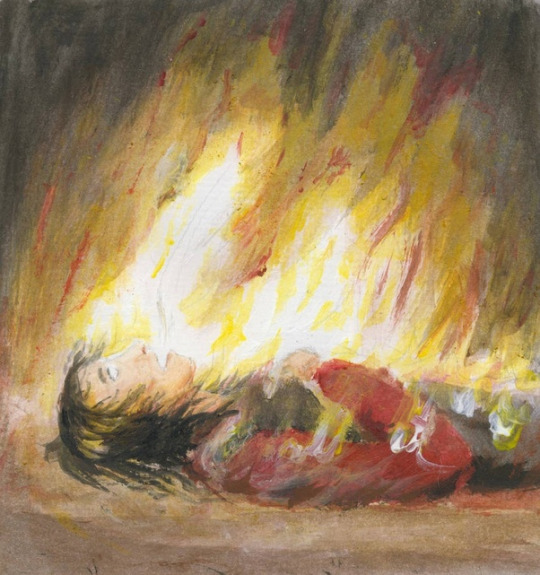
The Death of Curufinwe Feanaro by Gwenniel
Honestly, I’m surprised that Fëanor dies this early. I thought he was the central character, but I’m still only about a third of the way through, maybe less.
Despite having taken out Fëanor (mostly due to Fëanor’s own arrogance and impulsiveness), Morgoth still lost badly. He sends an envoy to Fëanor’s sons, acknowledging defeat and requesting a ceasefire, even offering to surrender a Silmaril. Fëanor’s eldest son, Maedhros (MY-thros, ‘th’ as in “this”) takes over from Fëanor as the leader of the Noldor. Maedhros doesn’t trust Morgoth as far as he can throw him, but decides to go to the negotiation anyway, with backup. Of course it’s an ambush, and there are Balrogs. All of Maedhros’s backup are killed, and Maedhros himself is captured and taken to Angband.
Fëanor’s other sons build themselves a mighty fortress, but Morgoth keeps Maedhros hostage until the Noldor agree to end the war and leave Beleriand. The sons of Fëanor doubt that Morgoth will keep his word on that. They also literally can’t stop fighting Morgoth, because of their oath. So, Morgoth hangs Maedhros by the wrist from the face of the Thangorodrim Mountains. The only remaining option is to try to rescue him.

Maedhros Upon Thangorodrim by Jenny Dolfen
Back with Fingolfin, the rest of the Noldor painstakingly make their way across the land bridge. It’s an agonizing journey, and many Elves die, but when the first dawn finally comes, Fingolfin unfurls his banner and blows his horn in victory. The ice starts to melt, and flowers spring up under his feet. The Sun chases Morgoth to the depths of his citadel, so he doesn’t harass Fingolfin’s group as they arrive in Middle-earth.

Helcaraxe by Stefan Meisl
Fingolfin is wiser than Fëanor, and doesn’t try to attack Angband. Instead, he tries to find the other Noldor. Most of his Fingolfin’s group really hate Fëanor and his sons, because it’s their fault that they nearly froze to death. So, they make their own camp near Lake Mithrim.
Fëanor’s group hears of their arrival. They’re astounded and impressed that Fingolfin and co. managed to survive, and that they made it to Middle-earth. They would welcome Fingolfin’s group, but they’re too ashamed to offer. Too little, too late.
Fingon, Fingolfin's son, decides to try to heal the relationship between the two groups of Noldor. He recognizes that Morgoth would be thrilled if his enemies were so divided against themselves. If they want to stand a chance against Morgoth, they have to unite. Fingon has the perfect idea for how to bring the two groups together. He was very close to Maedhros. He doesn’t know that Maedhros wanted to go back for him when Fëanor burned the ships, so, he assumes that Maedhros betrayed him. Even so, he still cares enough about Maedhros to want to try to rescue him.
He climbs the mountains of Thangorodrim by himself, hidden under the cover of the darkness that Morgoth created to shut out the sun. Then, Fingon takes out a harp and starts singing. He sings a song from Valinor, from long before the unrest took hold. His voice rings throughout the mountains, in which there had never been singing before. He sings in defiance of Morgoth like the Whos singing in defiance of the Grinch on Christmas Day.

He Sang a Song of Valinor by Jenny Dolfen
Faintly, he hears an answering voice singing the same song. Maedhros is singing, despite his suffering. Fingon climbs up to where Maedhros hangs, and cries when he sees how much pain Maedhros is in. Maedhros has long since given up hope, and begs Fingon to shoot him, to put him out of his misery. Fingon prepares to shoot an arrow, but says a prayer to Manwë, asking him to have mercy.
Fingon’s prayer is answered. Manwë sends the King of the Eagles, Thorondar, who picks up Fingon and carries him up the mountain face to where Maedhros hangs. Fingon can’t find any way to open or break the shackle that holds Maedhros, and can’t detach it from the mountain face. Maedhros again begs Fingon to kill him, but Fingon figures that it’s better to lose a hand than to die. Fingon cuts off Maedhros’ hand, and Thorondar catches him, carrying both Elves back to Lake Mithrim.
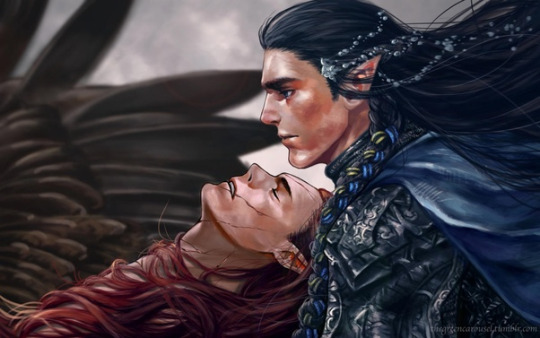
Flight from Thangorodrim by @thegreencarousel
(As you can probably guess, a lot of Silm fans ship Fingon and Maedhros. I almost did, too… and then I remembered that they’re first cousins.)
After that, the rift between the two groups of Noldor is healed. Fingon is hailed as a hero by both groups of Noldor. Maedhros steadily gets better, and recovers his strength. He pulls and Inigo Montoya and learns to wield a sword just as well with his left hand. He also waives his claim to kingship over the Noldor. He begs Fingon to forgive him for having deserted him back when Fëanor burned the boats, and tells Fingon that he’s the rightful heir of the House of Finwë. That’s a nice gesture, but it’s actually part of the curse — The House of Fëanor became known as the Dispossessed, because even though they’re the older brother’s children, they permanently lost the rulership of the Noldor.
The now-united Noldor decide to explore Beleriand a little more, and they eventually meet the Sindar. The Noldor and Sindar recognize each other as kin, but have a hard time understanding each other because they speak different languages. Eventually, they figure out a way to talk to each other. The Noldor learn about King Thingol and the magic wall around his kingdom of Doriath, and about the Sindar’s battles with the Orcs. The Sindar are delighted that these stronger, smarter elves from Valinor arrived right when they were most needed, and assume that the Valar must have sent them.
Thingol is less enthused about a bunch of hotheaded foreign princes arriving in his land. The only Noldor he trusts to let past the magic wall are Finarfin’s children: Finrod, Angrod, Aegnor, and Galadriel. This is because their mother was Eärwen, one of the Teleri Elves and Thingol’s niece. So, they’re his closest relatives among the Noldor. Angrod is the first of the Noldor to enter Thingol’s palace in Doriath. He tells Thingol all about what happened to the Noldor in the North — how they crossed over, how many of them there are, how they beat back Melkor’s forces, how Finrod saved Maedhros, etc. He leaves out the part about the kinslaying and the curse.
Thingol gives the Noldor his blessing to remain in the northern part of Beleriand, but they can’t displace the Sindar from their homes. They also aren’t allowed to come past Doriath’s magic wall, unless they’re invited, or if they desperately need an audience with Thingol. Thingol is Lord of Beleriand and the Noldor are imposing upon him, so, they’re in no position to argue.
When Angrod brings this message back to the Noldor, Maedhros straight-up laughs. “What kind of king is he? These aren’t his lands. He doesn’t have the power to grant us leave to live here, as if we were his vassals. If it weren’t for us, there’d be Orcs breaking down his door.”

Maedhros by _star热爱生活呀巴扎嘿
Caranthir, another one of Fëanor’s sons who inherited his father’s fiery temper, also doesn’t like Thingol’s conditions. “Who’s idea was it to send Finarfin’s sons as our spokesmen? I don’t trust a word they say, and I don’t trust this cave-dwelling Dark Elf. Finarfin’s sons should remember that, whoever their mother was, their father was still a Noldo — they should be loyal to the Noldor.”
Angrod is furious at this, and storms out. Maedhros chides Caranthir for going too far. The rest of the Noldor are all concerned that Fëanor’s whole family appears to be a ticking time bomb. It’s only a matter of time before one of them snaps and causes violence. Maedhros reads the room, and manages to get his brothers under control. He decides that he and his brothers should leave before things get worse. Not just leave the meeting, but leave the region — it’s better that they and the other Noldor remain friends at a distance, rather than risk another confrontation that tears them apart from within.
Maedhros and his brothers head east. Their new home is more exposed, and has less natural defense against Angband, but Maedhros doesn’t mind this. He and his brothers can be a buffer for the rest of the Noldor if Morgoth attacks again. And of course, the curse is still in effect.
Caranthir and his people are the first to find the Dwarves, who had stopped coming into Beleriand ever since the battle against Morgoth. You’d think that the Dwarves and the Noldor would have a lot in common, since both love to make things from metals and gems, and they both appreciate good craftsmanship. But nope. The Dwarves are too secretive, and Caranthir is too arrogant. He doesn’t even bother to hide that he thinks the Dwarves are ugly, and all his underlings follow suit. Despite that, the Dwarves and Caranthir’s Elves have a common enemy in Morgoth, so, they form an alliance anyway. From that alliance, Caranthir ends up learning a lot of Dwarven secrets about metalworking and masonry. It’ll really pay off for him in the future.

Caranthir by Miyota
Twenty years pass since the Sun first rose, and Fingolfin decides to throw a feast to unite all the scattered Elves. This feast is such a big deal that it has a name — Mereth Aderthad, the Feast of Reuniting. It’s a last moment of joy and happiness before everything goes to hell again. A number of Sindar attend the feast as well, alongside their leader, an Elf called Círdan (you’re gonna want to remember him). Thingol does not leave his magically-fortified palace, but he sends two diplomats to the feast — Daeron, the Elf that invented runes, and another called Mablung. There are even some Green Elves from the easternmost part of Beleriand. The main language spoken at the party is Sindarin, because the Noldor have had an easier time learning it than the other Elves have had of learning Quenya. All the Elves are on good terms with each other, and everything is great for a while. The Noldor begin to think that maybe Fëanor was right about Middle-earth being a good place for them.
Another thirty years pass. Turgon (Fingon’s brother and a son of Fingolfin) meets up with Finrod (a son of Finarfin). Together, they travel southward on the River Sirion, just to get away for awhile. They sleep on the riverbank, and Ulmo (the Vala of water) sends them a dream. Neither of them remembers the dream, only that it was troubling, and neither realizes that they had the same dream. After that, they’re both burdened with a sense of unease. Troubling dreams can only mean one thing — Morgoth is going to become a problem again. Turgon and Finrod independently decide that it’s a good idea to prepare for the worst.
Finrod and Galadriel, his sister, are briefly guests of King Thingol in Doriath (being two of the few Noldor whom Thingol would allow past the magic wall). Finrod is very impressed by the majesty of Menegroth, the king’s underground palace. He wants his own underground palace just like it, and tells Thingol as much. Thingol could have said, “no, how dare you copy me,” but instead he tells Finrod about a secret place in his realm — there’s a gorge in the River Narog, the river to the west of the Sirion, where there’s a cave complex that Finrod can use to build a palace.
Enlisting the help of some Dwarves, Finrod builds his palace, Nargothrond. He gives the Dwarves treasures from Valinor to thank them. The Dwarves are so impressed with the jewels that they make Finrod a beautiful necklace called the Nauglamír, which is said to be the finest work of the Dwarves in the First Age. It’s set with many, many gemstones from Valinor, but it’s as light as spider silk. The Dwarves are also grateful to Finrod for giving them an excuse to build another cool cave palace. They give him an epithet in their own language, Felegund, which means “Hewer of Caves.” Only a really cool Elf appreciates caves so much that he asks for his own cave palace.

Finrod by _star热爱生活呀巴扎嘿
Galadriel decided to stay in Thingol’s court, instead of following her brother to Nargothrond. She happened to meet one of Thingol’s relatives, a certain Sinda named Celeborn, and fell in love with him. Staying with Celeborn gave Galadriel the opportunity to study at the feet of Melian herself. So, if you’re wondering where Galadriel gets her wisdom and power from, it’s because she learned directly from a Maia.
Meanwhile, Turgon is feeling homesick for Valinor. He remembers the city of Tirion on its hill, with its silver tree (not the Silver Tree, one of its descendants). When he returns home, Ulmo personally appears to him, and tells him to go to the Vale of Sirion. He finds a hidden valley surrounded by mountains, in the center of which is a hill. It’s the perfect place to establish a New Tirion.
Throughout all this, Morgoth has been carefully observing the Noldor’s activities, and judging their strength. As soon as the Noldor are too distracted by city-building to prepare for war, Morgoth strikes. The Orcs are still a lot weaker than the Elves. Fingolfin and Maedhros chase the new Orc army all the way back to Angband. They kill every last one, within sight of Angband’s gates. But remember, Morgoth is a Vala, and has more up his sleeve than simply Orc armies. He causes earthquakes, fires, and volcanic eruptions. The Elves realize that there’s only one thing to do: cut the threat off at its source. They lay siege to Angband, and this siege lasts a full four hundred years.

Angband by gresetdavid
The Orcs are so afraid of the Noldor that they don’t leave Angband. Fingolfin boasts that the only way Morgoth could score a point against them is if the Noldor commit treason amongst themselves, which sounds a lot like tempting fate. Despite his confidence, the siege is a failure. Four hundred years, and the Elves don’t get any closer to capturing Angband, let alone taking back the Silmarils. Morgoth can still send spies out the back way, because the Elves can’t climb the snowy Thangorodrim Mountains. He captures Elves alive, and terrifies them so much that they do his bidding without having to be forced. He also looks for opportunities to sew dissent amongst the Noldor. It worked once, so it can work again.
A hundred years into the siege, Morgoth tries to capture Fingolfin. He knows that Maedhros isn’t about to let himself get captured again, and taking out the king would be an advantageous move. So, Morgoth sends a bunch of Orcs to sneak towards the Elves’ camp using the back way, through the same frozen mountain pass that Fingolfin used to get into Middle-earth. Morgoth should know at this point that Orcs are no problem for Elves. Fingon notices the Orcs, and slaughters them. This battle doesn’t even count as one of the “great battles,” because there aren’t enough Orcs for it to be notable. After that, there’s an interlude of peace that lasts for many years.
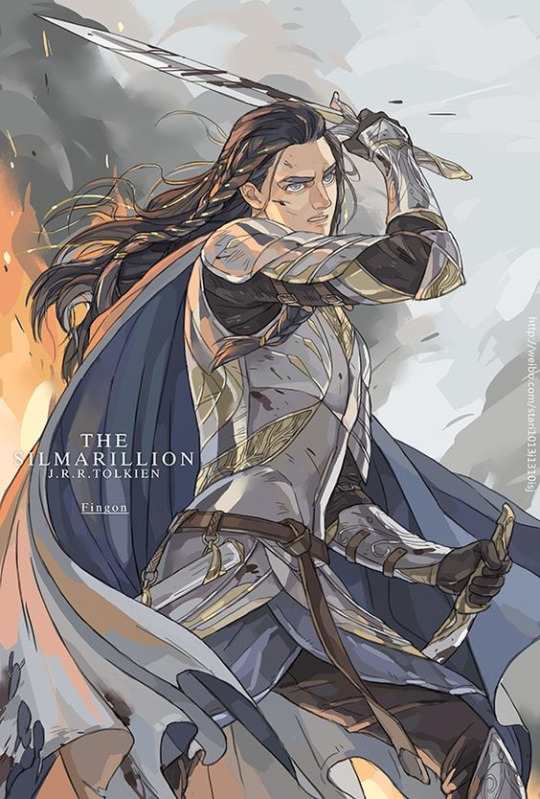
Fingon by _star热爱生活呀巴扎嘿
Morgoth finally gets the memo that he’s not going to beat the Elves by throwing Orcs at them. So, he tries a new tactic: A fucking dragon! If you think Smaug is bad, he’s a little baby lizard in comparison to Morgoth’s dragons. This one is called Glaurung (“gold worm” in Sindarin), and it’s a fat worm-like thing with a mouth of sharp teeth and fire breath. Glaurung is a young dragon, so, he mostly just thrashes around destroying fields and so forth. But he sufficiently terrifies the Elves.
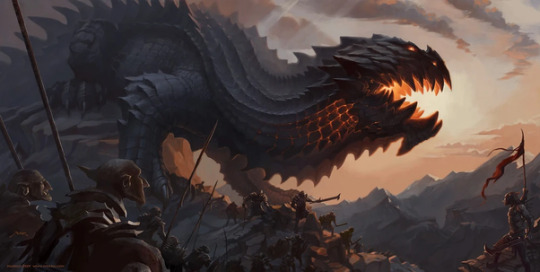
Glaurung by Vaejoun
Fingon isn’t afraid, though, and takes a band of archers to pummel Glaurung with arrows. Glaurung’s armored scales haven’t fully developed yet, so the arrows drive him crawling back into Angband. Fingon is endlessly praised by the Noldor for having defeated the dragon, and Morgoth is kicking himself for having shown his hand too soon.
After Glaurung’s defeat comes the Long Peace, which lasts two hundred years. In that time, the Elves have the opportunity to build beautiful cities and write books of lore and create other art. (This time is called the “Long Peace” because Morgoth doesn’t make any attacks, but presumably, the Siege of Angband is still going on.) The Noldor and Sindar also intermix, becoming more like one society, though the biological and cultural differences between them remain: The Noldor are still smarter and stronger, wiser, better warriors, and they like living in stone buildings. The Sindar have better singing voices, and are better musicians in general, and like living in the woods. Some Sindar are nomadic and wander around Beleriand, singing as they go.
*whew.* That’s it for this section.
Next part.
#the silmarillion#silm#the silm fandom#silmarillion#silm art#summary#the lord of the rings#lotr#feanor#fëanor#fingolfin#maedhros#fingon#finrod#thingol#the noldor#the sindar#morgoth#jrr tolkien#tolkien#middle earth#elves#tolkien elves#silm elves#beleriand#angband
50 notes
·
View notes
Text
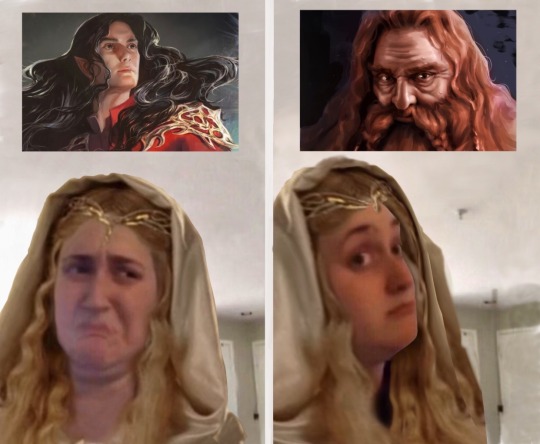
Behold! The reason I buy it when characters call Galadriel wise.
Edit: WAIT SHOOT I FORGOT TO CREDIT THE ARTISTS
Feanor is by Bellaberolts
And Gimli is by Jas Sparks
Please forgive me for using your art in my shitty meme.
#tolkien#jrr tolkien#galadriel#feanor#mightiest of the noldor#gimli#gimli son of gloin#dwarves#the noldor#lady of light#galadriel’s hair#over you gold shall have no dominion#lord of the rings#lotr#silm#the silmarillion#kombucha girl#do you ever decide to do something#that is SUCH a waste of time?#that’s me and the shoddy galadriel hair on kombucha girl#done on my phone in pocket procreate#which i can only vaguely work
963 notes
·
View notes
Text
G.R.R.Martin: tell me about Aragorn’s tax policy
Me, looking him dead in the eyes: all of tolkiens elves had universal healthcare. The larger cities had free education, expanding access to education in rural areas was a key goal of Finwe’s reign. All the elven universities where funded by taxpayer dollars. They had a universal basic income in valinor- that didn’t transfer when the Noldor where exiled and despite attempts during the seige of Angband it wasn’t re-established until the second age.
#eli rambles#listen I have OPINIONS#the silm#the silmarillion#silm#Silmarillion#the noldor#ughhhh it’s 2:30am#elven politics#finwe#fuck you grrm#please don’t make me tag#I just had to get this out there because it was keeping me awake
15 notes
·
View notes
Text
There is something just so funny about the Teleri bodily throwing the Noldor off their ships.
#oh you're trying to take our boats?#nope. into the water with you!#the teleri#the noldor#alqualonde#aman#first kinslaying#slowly ceding my soul to the silmarillion#page 87#grimwing gripes
12 notes
·
View notes
Text
White was that ship and long was it a-building, and long it awaited the end of which Círdan had spoken. But when all these things were done, and the Heir of Isildur had taken up the lordship of Men, and the dominion of the West had passed to him, then it was made plain that the power of the Three Rings also was ended, and to the Firstborn the world grew old and grey. In that time the last of the Noldor set sail from the Havens and left Middle-earth for ever. And latest of all the Keepers of the Three Rings rode to the Sea, and Master Elrond took there the ship that Círdan had made ready. In the twilight of autumn it sailed out of Mithlond, until the seas of the Bent World fell away beneath it, and the winds of the round sky troubled it no more, and borne upon the high airs above the mists of the world it passed into the Ancient West, and an end was come for the Eldar of story and of song.
OF THE RINGS OF POWER AND THE THIRD AGE in which these tales come to their end | The Silmarillion by J. R. R. Tolkien | Edited by Christopher Tolkien
#the silmarillion#the hobbit#the lord of the rings#autumn#feeling bittersweet#elrond#cirdan#the noldor#jrr tolkien#zha-hzu
11 notes
·
View notes
Text
Tolkien via the Silmarillion made me fall in love with grey eyes. It’s the best eye colour. And today I also discovered that my best friend’s eyes are grey, not blue as I had thought. I was so happy. Life is good.
13 notes
·
View notes
Text
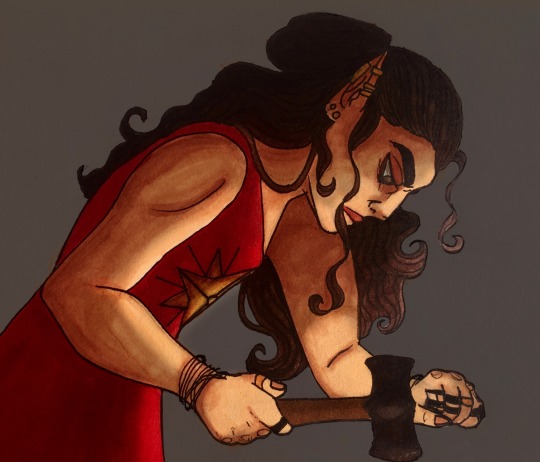
Curufin pre Alqualondë kinslaying
#Curufin#Curvo#atarinke#curufinwe#I like to think that Curvo was pretty normal up until Fëanor’s death#after which he became more and more unstable and unhinged#to the point where nobody but Tyelko and Tyelpë could stand being around him#talk to me about my Curvo Has A Mental Breakdown And Is Also Fucking Insane thoughts <3#tolkien#the Silmarillion#lotr#lord of the rings#the sons of feanor#feanorians#the noldor#noldor elves#elves#drawing#my art#art#traditonal art
74 notes
·
View notes
Text
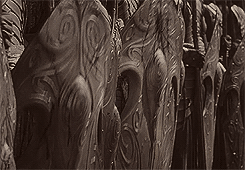
The NOLDORIN ARMY of the Last Alliance on the Plains of Dagorlad during the First Battle of Dagorlad in THE LORD OF THE RINGS: THE FELLOWSHIP OF THE RING (2001)

The SINDARIN ELVES of Lothorien sent to help the Men of Rohan at the Battle of Helm's Deep in THE LORD OF THE RINGS: THE TWO TOWERS (2002)
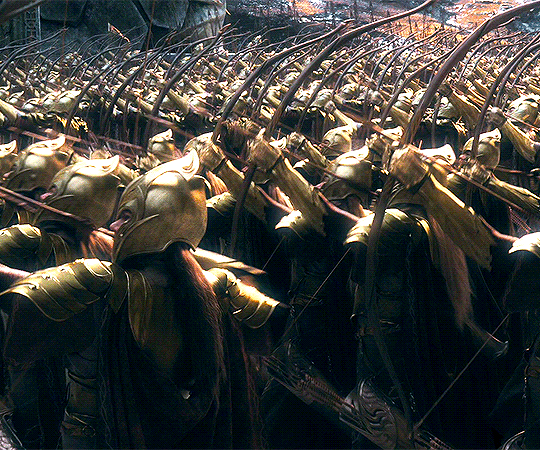
The SILVAN ARMY of Mirkwood during the Battle of the Five Armies in front of Erebor in THE HOBBIT: THE BATTLE OF THE FIVE ARMIES (2014)
#tolkien elves#lord of the rings#the lord of the rings#the hobbit#tolkien gave me life#the noldor#the sindar#the silvans#the elves
10 notes
·
View notes
Text
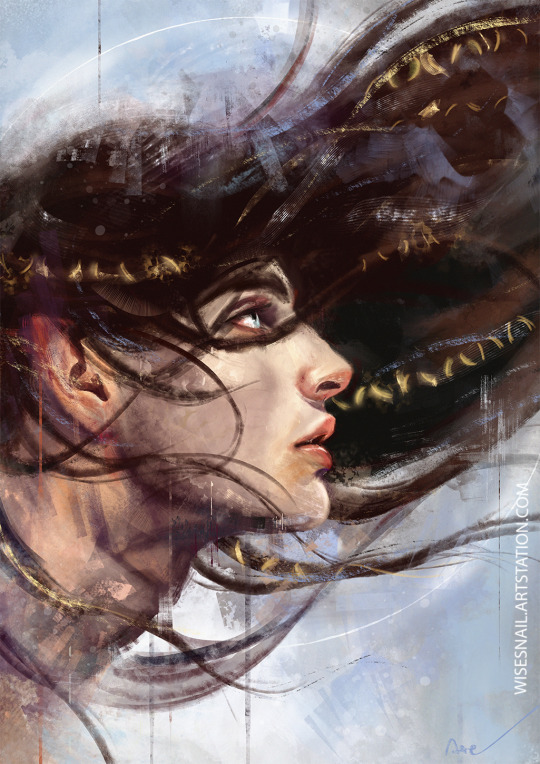
"High upon the shoulders of Thangorodrim [Fingon] climbed, and looked in despair upon the desolation of the land; but no passage or crevice could he find through which he might come within Morgoth's stronghold. Then […] he took his harp and sang a song of Valinor […]; and his voice rang in the mournful hollows that had never heard before aught save cries of fear and woe.
Thus Fingon found what he sought."
Tolkien, J. R. R. (2013). The Silmarillion. HarperCollins.
Aka Fingon finally finds Maedhros
Prints and other stuff on my RedBubble and Threadless
#fingon#the valiant#findekano#maedhros (somewhere)#silmarillion#tolkien#elf#elves#noldor#wisesnail#speed painting#my art#thangorodrim
1K notes
·
View notes
Text

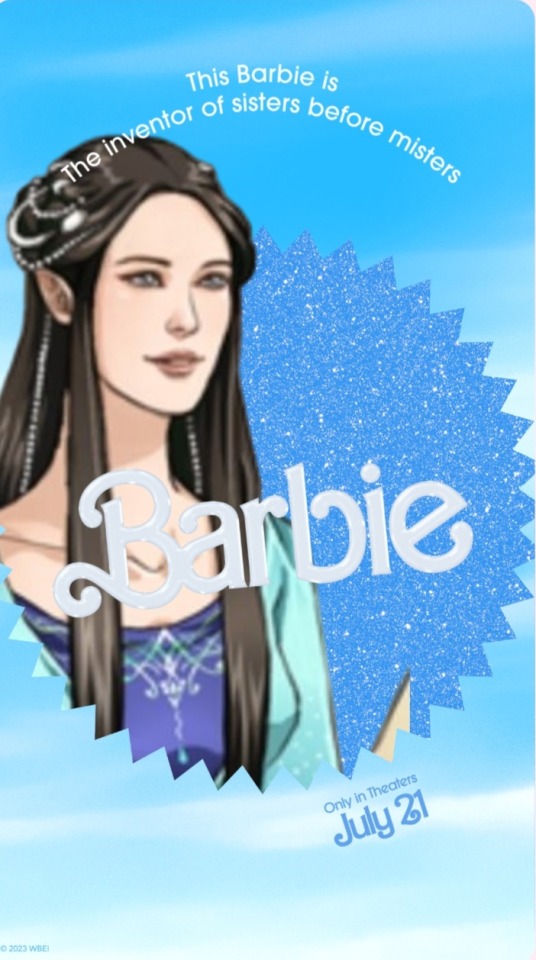

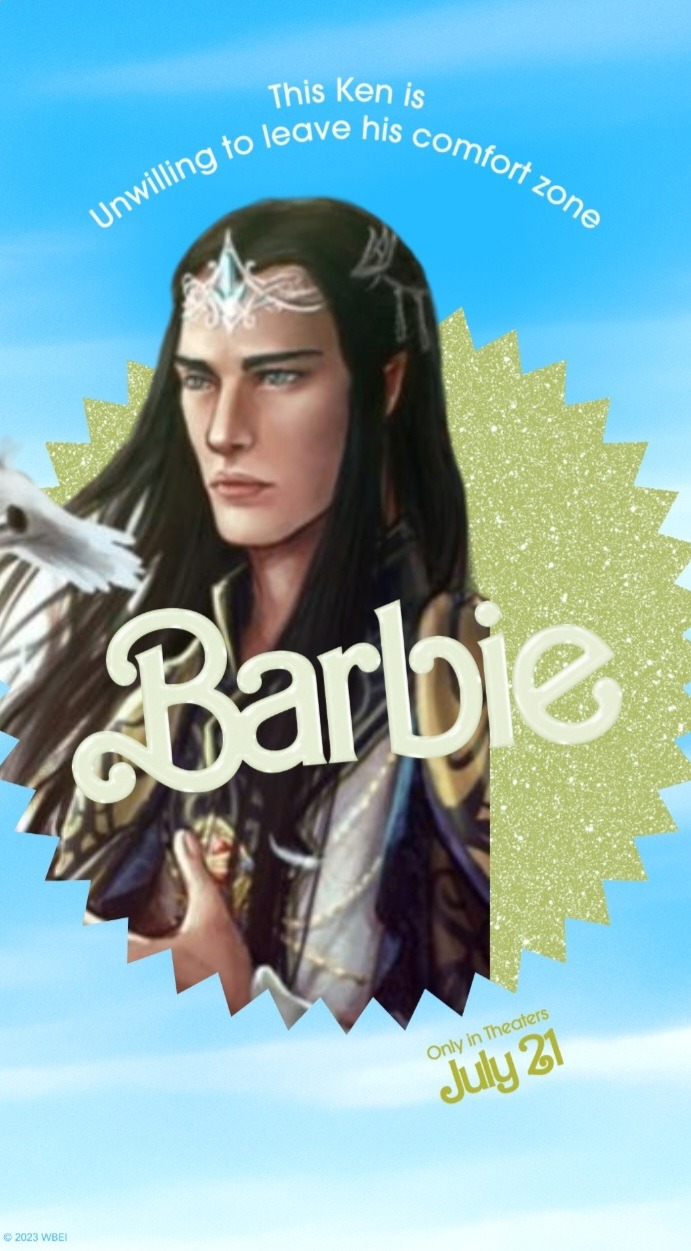
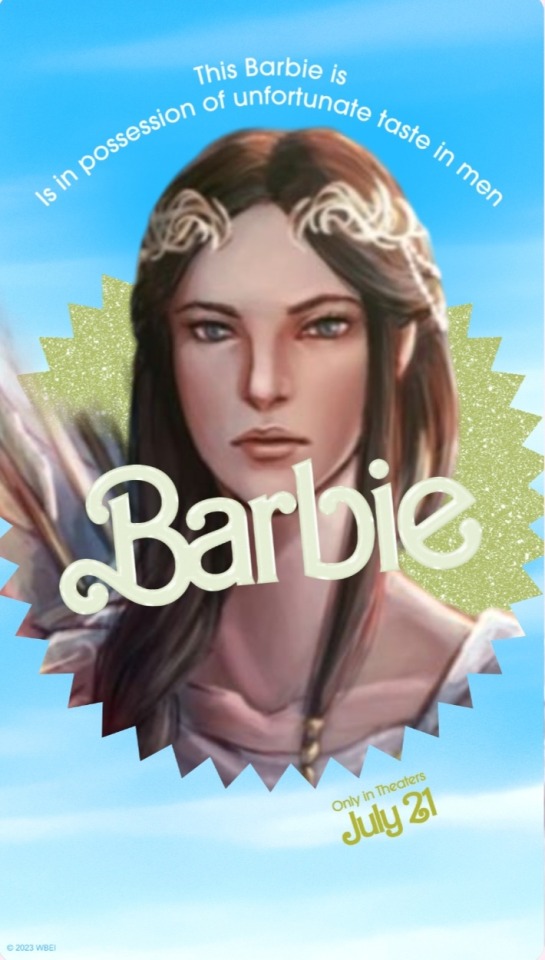



House of Fingolfin edition: part 3/4
(Part 1) - (part 2) - (part 4)
Credits: Maeglin by SaMo-art on Deviantart, Idril by Venlian on Deviantart & all the others by Niyochara
#the silmarillion#the silm#tolkien#jrrt#tolkien tag#lotr#the lord of the rings#tolkien memes#silm memes#barbie 2023#the noldor#fingolfin#anaire#nolofinwe#fingon#turgon#aredhel#maeglin#idril celebrindal#idril#findekano#turukano#irisse#lomion#itarille#my two cents#nolofinweans
230 notes
·
View notes
Text
Y'all need to see this omfg this is so good holy shit I'm so normal about this
#it's a rubber#silmarillion#oath of feanor#feanor#curufinwe#tolkien appreciation post#jrr tolkien#tolkien#elves#flight of the noldor#noldor#silmarils#sons of feanor
2K notes
·
View notes
Text

Finrod.
"Thunder rumbles, the fires burn"
#middle earth#tolkien elves#tolkien fanart#art#noldor#sillmarillion#silm art#the lord of the rings#tolkien art#tolkien legendarium#finrod#silm#silma#silmarillion#illustration#arda#tolkien
918 notes
·
View notes
Text
Concept: Elrond is, by Middle-Earth standards, a perfectly respectable level of fancy. You know, he's an elf-lord, he has plenty of robes with intricate embroidery or layers of flowing fabric, he wears finely-crafted jewelry, especially during formal occasions. He's elegant, but not gaudy– there are some tasteful references to his various ancestors in his outfits, he's got a whole image. He assumes that this is like, standard for the Noldor.
What Elrond failed to realize when he sailed to Valinor is that the expectations for "Middle-Earth elf lord with vaguely Noldorian implications" and "Noldor prince in the Blessed Realm" are two very different things. He goes to a feast and everyone is dressed like they'll die if they're not wearing four layers of skirts and at least 20 pounds of gems and precious metals. He shows up to Finarfin's court wearing more jewelry than he ever would've worn in Rivendell and people still flash him strange looks and ask him whether he wasn't feeling up to dressing up that night. He'll braid his hair in the half-up half-down style he often wore in Rivendell and it'll cause a scandal because– gasp– Elrond had part of his hair loose. In public. Noldor keep giving him jewelry because they've collectively decided that he's clearly been deprived in Middle Earth. He's confused and a little bit afraid, frankly.
Thankfully, most of the attention is taken off Elrond when Tirion is engulfed in drama the likes of which hasn't been seen for hundreds of years. The cause? Galadriel showing up in Tirion with her hair entirely loose, and no jewelry to speak of. Her robes are entirely plain. Her only adornment is her unbearably smug smirk.
#silmarillion#silm headcanons#elrond#elrond peredhel#galadriel#noldor#valinor#elrond in valinor headcanons my beloved#the culture shock had to be something#the noldor love him they're just very weird about showing it#this is bordering on crack territory but I stand by it
1K notes
·
View notes